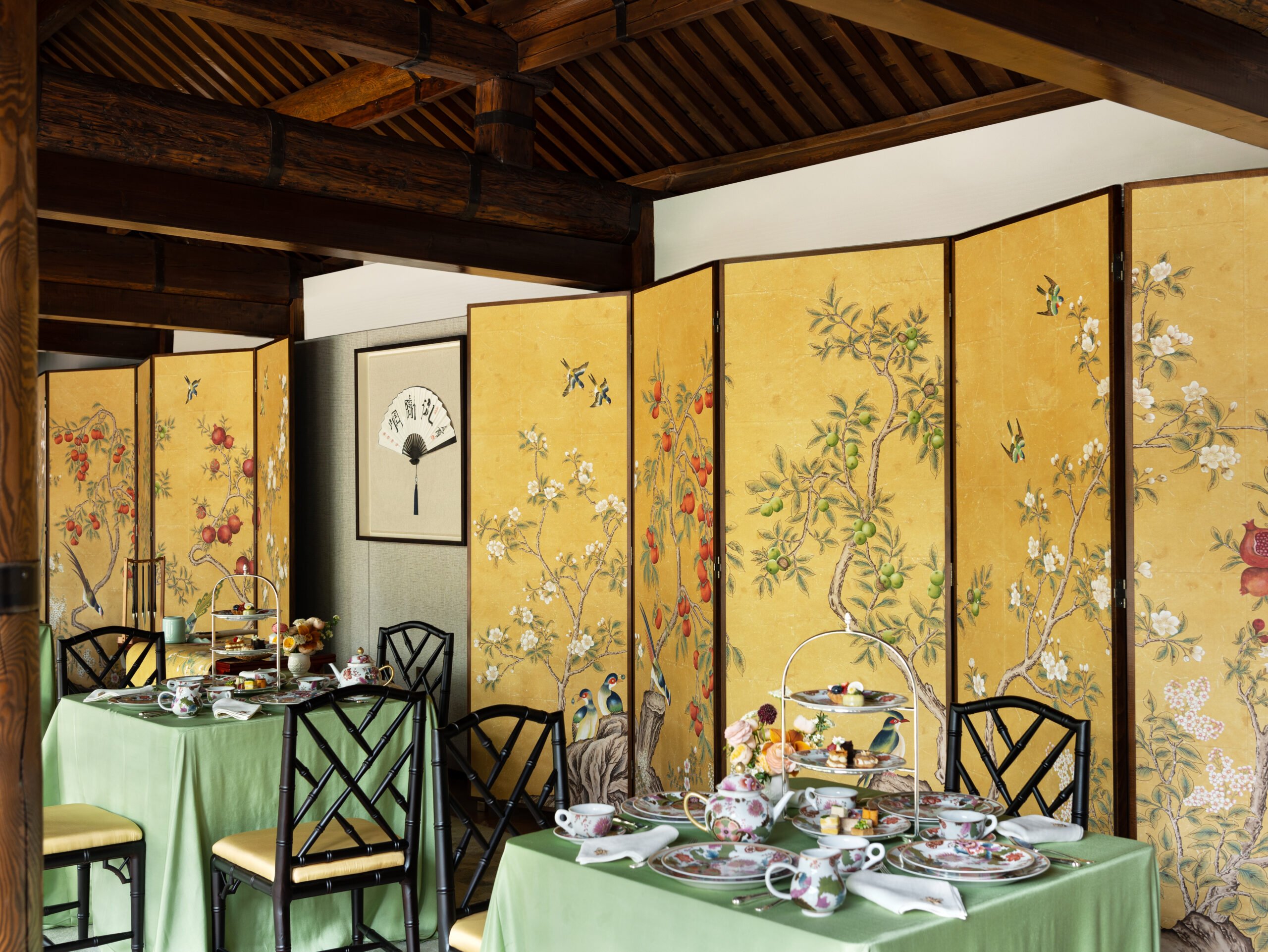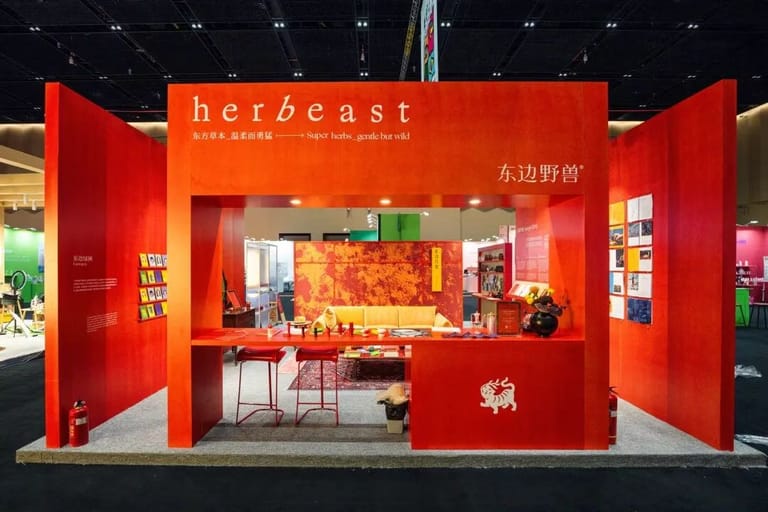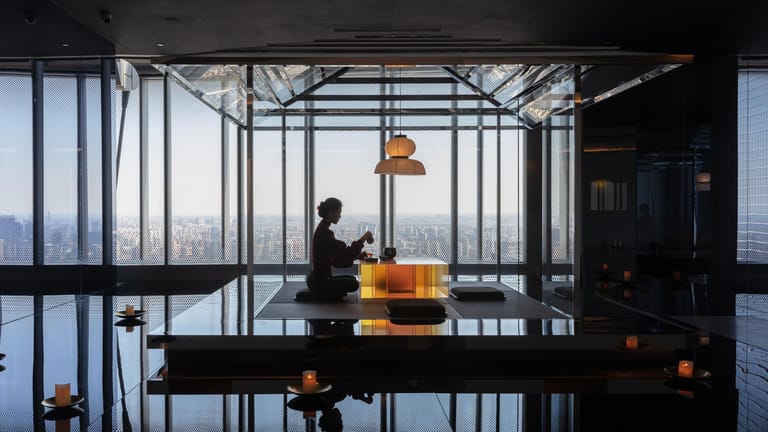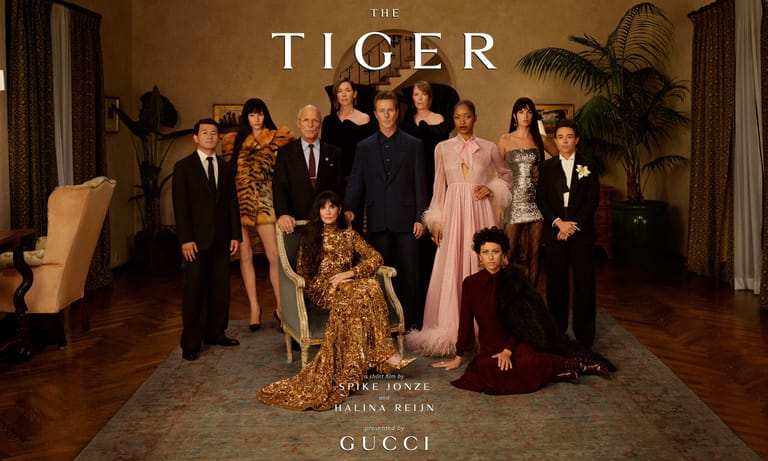de Gournay Reimagines Beijing Heritage at Mandarin Oriental Qianmen
By
Wenzhuo Wu

Published on
May 26, 2025

In the heart of Beijing’s historic Qianmen district, where imperial whispers echo across grey-brick courtyards, an immersive tableau has emerged—a confluence of artisanal mastery, sensory delicacy, and cultural reverence. Mandarin Oriental Qianmen and British heritage brand de Gournay have joined forces to transform the hotel’s Maple Lounge into a temporary sanctuary where art, nature, and gastronomy unfurl in synchrony.
At the center of this collaboration is an original hand-painted wallpaper titled “Qianmen Garden,” created by de Gournay exclusively for the space. Inspired by the flora of the hotel’s courtyard gardens—magnolia, crape myrtle, and pomegranate—interlaced with delicate birds in mid-flight, the panoramic canvas recalls both literati landscapes and 20th-century European decorative arts. Rendered as folding screens to echo the geometric logic of medieval aesthetics, the wallpaper bridges East and West without compromise or dilution.
This interplay between ornamental finesse and spatial storytelling is further enhanced by a second installation, “Pietra Dura,” presented in a lounge-adjacent enclave. Vividly colored birds and luxuriant floral bouquets take flight across another hand-painted expanse, animating the room with movement and depth. Together, these bespoke artworks turn the lounge into an ever-evolving mise-en-scène, inviting quiet observation and mindful indulgence.

Yet, this is no static gallery. The hotel’s culinary team has responded with a tasting menu that reads like an edible reflection of de Gournay’s palette—petal-pink mousselines, moss-green canapés, and gold-dusted sweets arranged on matching porcelain. Each bite not only harmonizes with its surroundings, but actively contributes to the multisensory immersion. The resulting experience is not simply about afternoon tea, but about inhabiting a living painting with all five senses—sight, sound, scent, taste, and touch—engaged in elegant accord.
What makes this collaboration especially resonant is its alignment with the Jingzhi Success Framework’s pillars of Craftsmanship, Authenticity, and Quality. de Gournay’s continued insistence on hand-drawn and hand-painted techniques—executed by a single artist per panel—is a testament to the enduring value of artisanal heritage in the age of mechanized luxury. It also speaks to the brand’s long-standing commitment to custom, client-specific commissions, a rarefied form of craftsmanship that is increasingly appreciated by China’s discerning luxury clientele.
Meanwhile, Mandarin Oriental Qianmen’s decision to engage with de Gournay as a creative partner, rather than merely a supplier of decor, reflects a growing institutional embrace of cultural sincerity. The installation draws direct inspiration from the hotel’s architectural and botanical DNA, allowing guests to feel the continuity between the indoor environment and the world beyond the courtyard walls. This kind of embedded storytelling—rooted in local context, not imposed upon it—is a model of Authenticity that rising Chinese luxury consumers are actively seeking.

The final note—Quality—is evident across the board: in the exquisite furniture curation, the seamless hospitality choreography, and the deep attention paid to harmonizing every sensory detail. This isn’t a pop-up; it’s an experience calibrated to linger in memory, not merely on social media.
As Chinese luxury continues to evolve beyond logos and brand recognition, partnerships like this illuminate a more sophisticated path forward—where beauty is immersive, meaning is layered, and success is measured not by spectacle, but by resonance.












